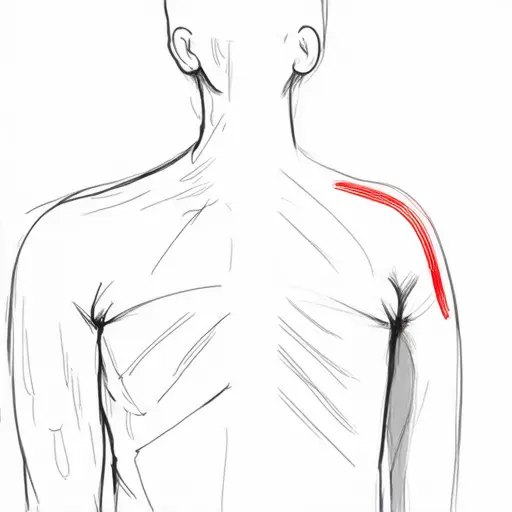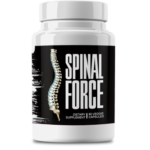This Village-Made Chinese Pain Reliever Eliminates Back And Joint Pain!
How to Tell If Your Shoulder Bone Pain Is Arthritis

Shoulder Bone Pain: Is Arthritis to Blame?
That nagging ache in your shoulder—the one that makes grabbing a coffee mug or brushing your hair feel like a chore—might be more than just everyday wear and tear. While injuries and muscle strains are common culprits, arthritis often flies under the radar as a potential cause. If your shoulder pain just won't quit, it's time to explore whether arthritis could be the hidden villain behind your discomfort—and what you can do about it.
What Does Shoulder Bone Pain Actually Feel Like?
Unlike temporary muscle soreness that fades after a good rest, true shoulder bone pain tends to stick around like an unwanted guest. We're talking deep, persistent discomfort that seems to come from the joint itself, often worsening when you move. Whether it's from a recent injury, chronic inflammation, or arthritis, this type of pain can really throw a wrench in your daily routine.
Why Your Shoulder Might Be Giving You Grief
- Oops moments: Broken bones, dislocations, or rotator cuff tears from accidents or sports
- Repetitive stress: Too many overhead motions (hello, tennis players and painters!)
- Angry joints: Conditions like bursitis or tendonitis causing inflammation
- The big A: Arthritis—either from wear-and-tear or autoimmune issues
When Arthritis Enters the Chat
If you're over 50 and your shoulder's been cranky for months, arthritis might be crashing the party. Picture this: the smooth cartilage that normally cushions your joint wears down, leaving bone rubbing on bone. The result? Pain that starts as a dull annoyance but can grow into constant discomfort, stiffness that's worst in the mornings, and maybe even some swelling or warmth around the joint.
Is It Really Arthritis? The Telltale Signs
Not all shoulder pain is created equal. Here's how to spot arthritis' calling cards:
The "I Can't Even" Shoulder
That stubborn ache that won't take a hint? Check. Morning stiffness that makes you feel like the Tin Man? Double check. If simple movements like reaching for a top shelf or scratching your back are becoming mission impossible, arthritis might be your uninvited guest.
The Puffy, Tender Shoulder
Notice some swelling around the joint? Does it feel tender when you press on it or look a bit red? These are classic signs your joint is inflamed—a hallmark of arthritis.
The "Where'd My Strength Go?" Phenomenon
If your shoulder feels weaker than usual or certain movements are suddenly off-limits, arthritis could be chipping away at your joint's mobility. That weakness isn't just in your head—it's your muscles responding to a joint that's not working like it should.
The Usual Suspects: Types of Shoulder Arthritis
Arthritis isn't a one-size-fits-all diagnosis. Here's the lineup of potential offenders:
Osteoarthritis: The Wear-and-Tear Culprit
This is your joints' version of gray hairs—it comes with age and use. Over decades, the cartilage breaks down until you've got bone grinding on bone. Not a pleasant thought, but it explains why your shoulder's been so vocal lately.
Rheumatoid Arthritis: The Friendly Fire
RA is like your immune system getting confused and attacking your own joints. Unlike osteoarthritis, it often hits both shoulders at once and might come with bonus symptoms like fatigue or low-grade fever.
Post-Traumatic Arthritis: The Injury Hangover
Remember that shoulder dislocation from your college football days? Or maybe that bad fall last winter? Even after healing, injuries can leave your joint vulnerable to arthritis years later.
Time to See the Doc? When to Get Help
If your shoulder's been giving you the silent treatment (as in, it hurts too much to function normally) for more than a few weeks, it's time to call in the professionals. Here's what to expect at your appointment:
The Shoulder Interrogation
Your doctor will play detective—asking about your pain patterns, testing your range of motion, and poking around for tender spots. Be ready to spill the beans about any old injuries or family history of arthritis.
Picture Time: Joint Selfies
X-rays can show if your joint space is shrinking (a red flag for arthritis), while MRIs give the inside scoop on cartilage and soft tissues. Think of it as your shoulder's very own photoshoot.
The Bloodwork Blues
If RA is suspected, some vials of blood might head to the lab to check for inflammatory markers. Not the most fun part, but it can crack the case wide open.
Fighting Back: Your Arthritis Treatment Toolkit
While we can't turn back time on your joints (yet), these treatments can help you stay in the game:
Medication Options
- NSAIDs: Your go-to pain relievers like ibuprofen that also tackle inflammation
- Joint injections: When the pain's really acting up, a cortisone shot can be a game-changer
- DMARDs: For RA, these meds help put the brakes on your overzealous immune system
Physical Therapy: Your Shoulder's Personal Trainer
A good PT can teach you exercises to strengthen the muscles around your joint, taking some pressure off the painful area. They'll probably start you with gentle pendulum swings or resistance band work—nothing too crazy.
When All Else Fails: The Surgical Route
For severe cases, options like arthroscopic cleanup or even joint replacement can give you a fresh start. Modern techniques mean smaller incisions and faster recovery than you might think.
Daily Hacks for Living With Shoulder Arthritis
Small tweaks can make a big difference in managing your symptoms day-to-day:
Eat Your Way to Less Pain
Load up on anti-inflammatory foods—think salmon, walnuts, and leafy greens. Your joints will thank you, and your taste buds won't complain either.
Move It (Gently) to Keep It
Swimming and yoga are perfect—they keep you moving without pounding your joints. Even a daily walk helps keep everything lubricated.
Work Smarter, Not Harder
Invest in some handy tools—a reacher grabber for high shelves, an ergonomic mouse for computer work. Your future self will high-five you (once your shoulder feels better).
Staying Ahead of the Pain Curve
An ounce of prevention is worth a pound of cortisone shots. Here's how to protect your shoulders:
Lighten the Load
Extra weight means extra stress on your joints. Even losing 5-10 pounds can take noticeable pressure off your shoulders.
Play Defense
Warm up before activities, lift with your legs (not your arms), and listen when your body says "enough already."
Don't Wait Until It's Worse
Addressing shoulder pain early can prevent bigger problems down the road. Regular check-ins with your doctor help keep small issues from becoming big ones.
The Bottom Line
What Really Matters
- Persistent shoulder pain + stiffness + swelling = possible arthritis
- Different arthritis types need different approaches—know which one you're dealing with
- Early action and the right treatment combo can keep you active and comfortable
Don't Tough It Out
If your shoulder pain is cramping your style, don't just grin and bear it. A visit to your doctor could be the first step toward getting back to pain-free movement. Managing arthritis is a long game, but with the right strategy, you can stay in it for the win.








